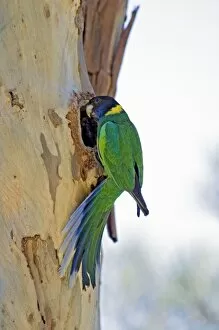Ringnecks Collection
The vibrant and charismatic ringnecks of Australia are a sight to behold. Picture No
All Professionally Made to Order for Quick Shipping
The vibrant and charismatic ringnecks of Australia are a sight to behold. Picture No. 11992711 showcases the Port Lincoln subspecies, an adult bird gracefully feeding on dry flowerheads. With its striking green plumage and bright red beak, this Australian Ringneck stands out against the arid backdrop of the Outback in Picture No. 11992710. In Western Australia, an adult male Australian Ringneck can be seen in all its glory as it delicately feeds on flowers while standing on the ground. This species is known for its adaptability and can thrive in various habitats, including tree-lined watercourses and woodland areas. The resourcefulness of these birds is evident in Pictures No. 11992712 and No. 11992713, where they are captured feeding on the ground amidst the vastness of the Northern Territory's Outback region. Their ability to find sustenance even in harsh environments is truly remarkable. Nesting habits vary among different subspecies of ringnecks; however, they often utilize hollows within eucalyptus trees as their breeding sites. In Picture No. 11992714, we witness an Australian Ringneck inspecting a potential nesting hole with great curiosity at Finke Gorge National Park. Feeding preferences also differ among these colorful parrots, as shown in Picture No. 11992715 where an adult Australian Ringneck indulges itself by feasting on yellow berries from a bush at West MacDonnell National Park. One cannot overlook the Mallee Ringneck (subspecies barnardi) featured in Picture No. 11992716—a member of the Australian Ringneck complex that exhibits distinct variations across different regions but readily hybridizes when populations overlap. These enchanting creatures have adapted to survive within scrub-country landscapes near open areas and clearings throughout eastern inland Australia—this is beautifully exemplified by their choice to nest within decaying debris found inside eucalypt hollows, as depicted in Picture No.












